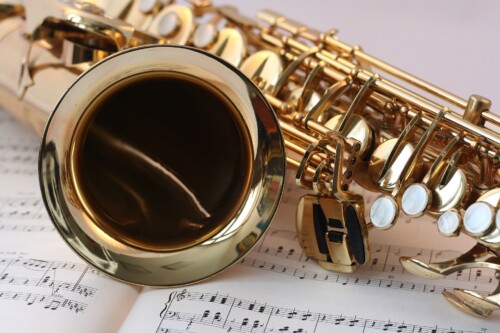Music Therapy
Music therapy, an allied health profession, “is the clinical and evidence-based use of music interventions to accomplish individualized goals within a therapeutic relationship by a credentialed professional who has completed an approved music therapy program.”
The National Institute for Health and Care Excellence (NICE) have claimed that therapies, such as music therapy, are an effective method in helping individuals experiencing mental health issues, and more should be done to offer those in need such types of help.
Music therapy is a broad field. Music therapists use music-based experiences to address client needs in one or more domains of human functioning: cognitive, academic, emotional/psychological; behavioral; communication; social; physiological (sensory, motor, pain, neurological and other physical systems), spiritual, aesthetics. Music experiences are strategically designed to utilize the elements of music for therapeutic effects, including melody, harmony, key, mode, meter, rhythm, pitch/range, duration, timbre, form, texture, and instrumentation. The therapy is predominantly led by the client, and is used to help the client to express their issues and problems when they may find it difficult to do so. The goal is to improve the client’s communication and they mental health by attempting to find a way the client can adapt to the world around them and the challenges they may face. Such therapy is available through the NHS in the UK.
Some common music therapy practices include developmental work (communication, motor skills, etc.) with individuals with special needs, songwriting and listening in reminiscence, orientation work with the elderly, processing and relaxation work, and rhythmic entrainment for physical rehabilitation in stroke victims. Music therapy is used in medical hospitals, cancer centers, schools, alcohol and drug recovery programs, psychiatric hospitals, nursing homes, and correctional facilities.
There is a wide qualitative and quantitative research literature base for music therapy. Music therapy is distinctive from Musopathy, which relies on a more generic and non-cultural approach based on neural, physical, and other responses to the fundamental aspects of sound.
According to Dr. Daniel Levitin, “Singing and instrumental activities might have helped our species to refine motor skills, paving the way for the development of the exquisitely fine muscle control required for vocal or signed speech.”
Evidence suggests that music therapy is beneficial for all individuals, both physically and mentally. Benefits of music therapy include improved heart rate, reduced anxiety, stimulation of the brain, and improved learning. Music therapists use their techniques to help their patients in many areas, ranging from stress relief before and after surgeries to neuropathologies such as Alzheimer’s disease. One study found that children who listened to music while having an IV inserted into their arms showed less distress and felt less pain than the children who did not listen to music while having an IV inserted Studies on patients diagnosed with mental disorders such as anxiety, depression, and schizophrenia have shown a visible improvement in their mental health after music therapy.
Types of music therapy
Two fundamental types of music therapy are receptive music therapy and active music therapy (also known as expressive music therapy). Active music therapy engages clients or patients in the act of making music, whereas receptive music therapy guides patients or clients in listening or responding to live or recorded music. Either or both can lead to verbal discussions, depending on client needs and the therapist’s orientation.
Receptive
Receptive music therapy involves listening to recorded or live music or responding to music, such as via dancing or other movement to music, or lyric discussion. It can improve mood, decrease stress, decrease pain, enhance relaxation, and decrease anxiety; this can help with coping skills. There is also evidence chemistry in one’s body may change, e.g. lowered cortisol levels.
Active
In active music therapy, patients engage in some form of music-making, e.g. vocalizing, rapping, chanting, singing, playing instruments, improvising, song writing, composing, conducting. Researchers at Baylor, Scott, and White Universities are studying the effect of harmonica playing on patients with COPD in order to determine if it helps improve lung function. Another example of active music therapy takes place in a nursing home in Japan: therapists teach the elderly how to play easy-to-use instruments so they can overcome physical difficulties.
Source: Wikipedia under Creative Commons License.
Articles posted on this site are the works of their respective authors. They may be for informational or entertainment purposes and do not necessarily represent the views of this website nor imply endorsement by this website, nor endorsement of this site by the authors, nor do we get paid for posting articles. Nothing herein is intended to diagnose, treat or cure any disease. Please do your research and seek professional advice before using any information.

